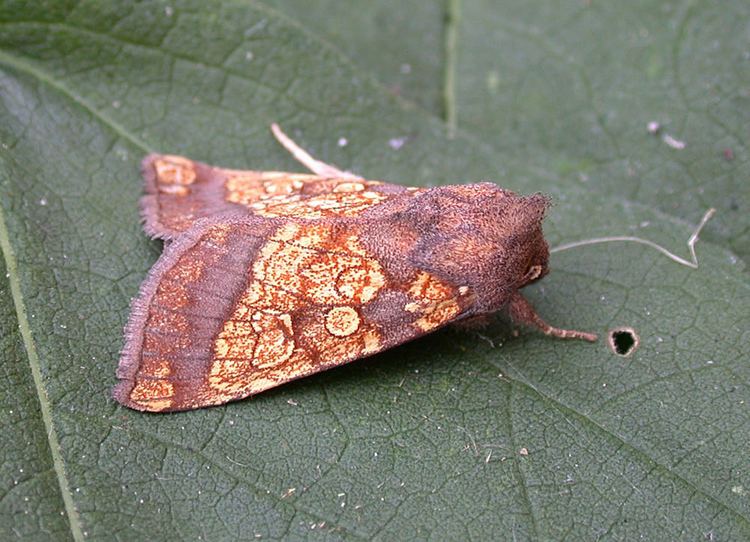Kingdom Animalia Class Insecta Rank Species | Phylum Arthropoda | |
 | ||
Similar Hoplodrina octogenaria, Small angle shades, Xanthia icteritia, Apamea lithoxylaea, Luperina testacea | ||
The frosted orange moth (Gortyna flavago) is a moth of the Noctuidae family which is found in Europe, Armenia, Syria and east through the Palearctic to western Siberia. It has also been recorded in Algeria. The frosted orange is a night-flying species with orange and brown speckled wings allow for perfect camouflage against autumn leaves in the daytime. It is attracted to light and does not come to flowers, and its larva inhabit the stems and roots of the species' food plants.
Contents
Technical description and variation
Wingspan ranges from 3 to 4.3 cm, Forewing yellow, thickly dusted with bright ferruginous, the space between subbasal and inner lines and that between outer and submarginal lines, filled up with dull liver-brown; the lines and veins finely red brown; all 3 stigmata pale yellow with darker centres and brown outlines, the reniform containing an outlined lunule; submarginal line yellowish ending in a yellow apical blotch: hindwing dirty luteous, with veins and cellspot, the outer line and a submarginal cloud grey:- in ab. suffusa ab. nov. [Warren] the forewing is wholly suffused with ferruginous; - cinarea Goosens from Algeria is pale yellow or reddish grey, with a dark patch between the stigmata, which are almost obsolete: the terminal area of ground colour or violet brown without any pale apical patch: hindwing without markings, whitish grey.
Biology
Flies between August and October. Northern variants tend to be slightly darker in colour.
Larva dirty white or yellowish, the dorsum dark red, with 3 faintly paler longitudinal lines; tubercles, and also the spiracles, black; head and plates dark brown.They feed on Sambucus racemosa, Filipendula ulmaria, Helianthus annuus and Arctium species – Arctium tomentosum, A. minus. The larva are considered a pest on foxglove (Digitalis purpurea).
